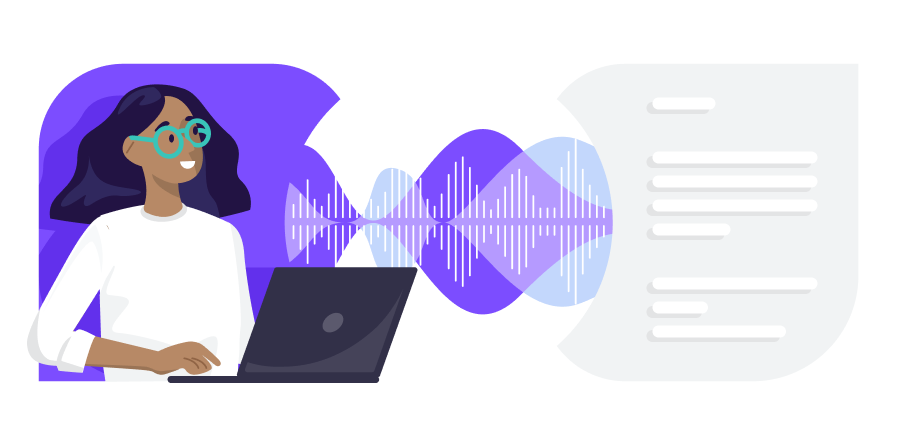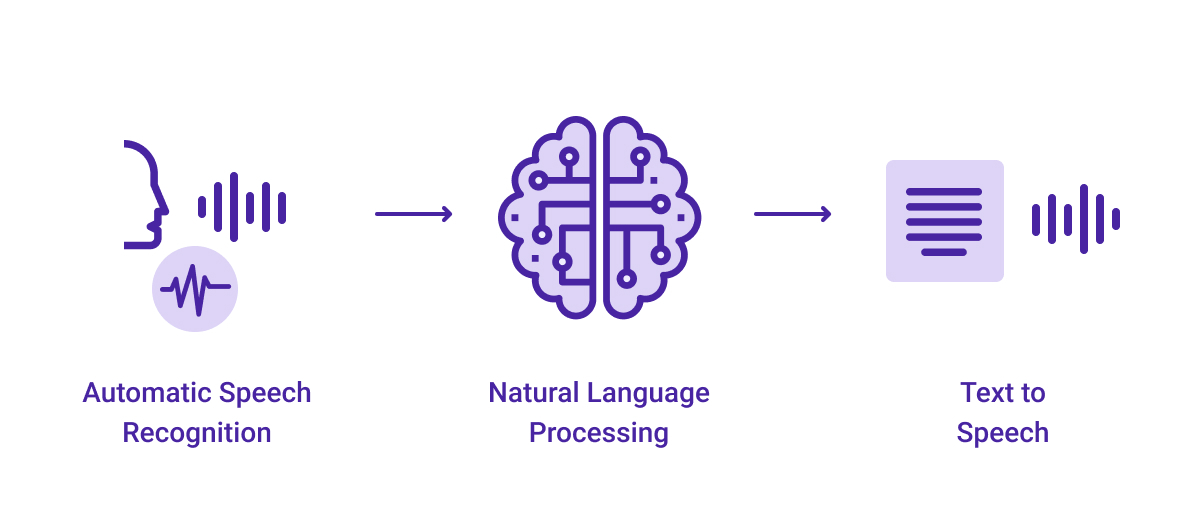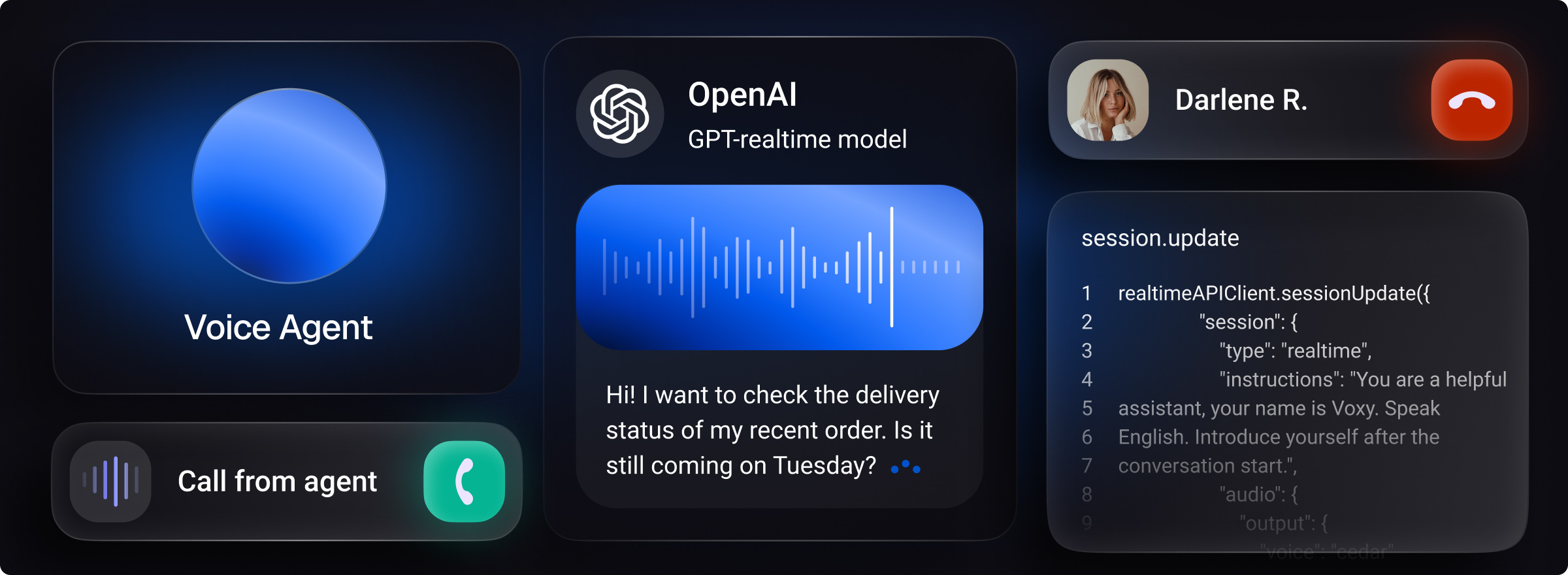It’s time for you to meet your most effective employee...
Nowadays, the key to improving customer service is automating your communications. It allows for freeing up employees’ time, creating great self-service options, increasing customer satisfaction and making your contact center more productive.
More and more companies are realizing the importance of automation and are investing in technologies such as AI, chatbots, voicebots and others. In order to keep up with competitors on any market, a modern business should not lag behind.
“About 75% of companies plan to invest in automation technologies such as AI and process automation in the next few years. AI, chatbots, voicebots and automated self-service technologies free up call center employees from routine tier-1 support requests and repetitive tasks, so they can focus on more complex issues.” (Source: Deloitte)
Voice bots, being among the most popular automation solutions, are quickly becoming a must-have for any call center. And there are many reasons for that.
What is a Voice Bot
Voice bots are AI-powered software that can understand natural language (NLU) and synthesize speech in order to converse with people. Voice bots can run automated call campaigns for various purposes, put data into your CRM and route calls to the appropriate agents. To put it simply, they are machines that can converse like people, and they can perform their tasks in very quick and effective ways. They don’t make mistakes and they don’t need time to rest, like live agents.
For your business, such bots are a scalable way to interact with customers and speed up the service. When implemented correctly and appropriately, they can easily outperform a large group of skilled agents.
 The AI technology helps voicebots to identify the key markers in human speech and conclude the best response to a dialogue. The text-to-speech (TTS) and speech-to-text (STT) engines quickly convert text into audio and vice-versa (all while your customer is speaking), so you can be sure there won’t be any lags, and the dialogue will feel human-like.
The AI technology helps voicebots to identify the key markers in human speech and conclude the best response to a dialogue. The text-to-speech (TTS) and speech-to-text (STT) engines quickly convert text into audio and vice-versa (all while your customer is speaking), so you can be sure there won’t be any lags, and the dialogue will feel human-like.
Voicebots are also sometimes referred to as voice assistants. However, they are not the same, because voice assistants are usually integrated into customers’ devices (for example, Apple’s Siri or Amazon’s Alexa can be called voice assistants, and Apple’s iPhone can be called a voice-controlled device).
How Does a Voice Bot Work?
All voice interfaces use Natural Language Processing (or NLP) to interpret words. Sometimes it’s also referred to as Speech-to-Text, NLU (Natural Language Understanding) or simply transcription systems. You are definitely familiar with such systems if you’ve ever used virtual assistants such as Siri or Alexa. The technology is also implemented in automated subtitling, smart homes, and in-car systems.
When it comes to giving replies, voice bots can either use pre-recorded audio files or the Text-to-Speech (TTS) technology. It is a computer-generated simulation of human speech using deep learning methods. It’s commonly used by developers that build voice applications such as IVRs (Interactive Voice Response). This technology is also referred to as speech synthesis.Instead of playing pre-recorded files, TTS automatically generates a human voice from raw text.
 Voice Bot Benefits
Voice Bot Benefits
Perfect for a large customer base
When you have a lot of customers, running massive call campaigns can become very time-consuming and increase your employees’ workload significantly. Voice bots have become the perfect solution. Their capabilities and productivity levels are unmatched, when it comes to such tasks as:
- Outbound call campaigns of any scale
- Surveys for service control
- Intelligent inbound call routing (with IVR)
- Automated verification and confirmation operations
- Informing customers about special offers
- Reminding customers of visits and special events
If your contact center processes large numbers of incoming requests, voice bots are crucial for fast customer service. They significantly reduce waiting time in the queue by processing simple requests and routing the complex ones to relevant departments. If you often need to reach out to large numbers of customers, voice bots also create great opportunities for delivering information to large groups of people in short periods of time.
Accessible at any time
Unlike live agents, voicebots are active and ready to help 24/7, which means customers can get information and resolve their issues whenever they need it most. Voicebots allow them to avoid having to wait on the line to speak with an agent. Also, it means customers don’t have to call in only during call center working hours. Bot-driven interactions are immediate and can improve the overall customer experience dramatically.
Voice communication is preferable for many customers
To many people, making a call is still the most convenient and quick way to interact with a brand or resolve an issue. Therefore, a voicebot becomes an important part of customer experience for such people.
A wide variety of integrations
Another great advantage voicebots have is that they can be easily and conveniently integrated with a wide range of customer service solutions, like a CRM or a knowledge base. It makes self-service options quite advanced and gives voicebots even more capabilities.
Voice bots save time and money
The bots require minimal coaching, thereby reducing the time lag between the setup and productivity boost (compared to humans agents). Besides, workforce cost gets significantly reduced. A voicebot can easily take over the repetitive tasks most agents have to deal with, drastically reducing the workload and eliminating the need for extra staff.
How to create a Voice Bot
Now that you’ve decided to improve customer service with a voicebot, you need to think about the requirements of your business. Each voicebot has its own level of complexity and takes a different amount of time to be created. Thankfully, nowadays there are many voicebot development platforms that make it much easier to create and launch a voicebot. However, before you create tasks for your developers, you should have a clear understanding of your business’ needs and potential use cases. Based on them, it will be easy to determine what features, flows and personas your bot should have.
Features to consider:
- The ability to pause and listen: Have you ever been annoyed by a long IVR monologue? If you have, then you understand how important it is that your bot is able to pause when a customer starts talking. For example, if your client says “no, I’m not interested” or “I’d like to talk to an agent right now”, or “sorry, could you repeat that”, your bot should be able to pause, listen and reply accordingly.
- Quick speech recognition: Speed is essential to a smooth and pleasurable experience. You voice bot should be able to interpret at the same rate at which your customer speaks. It will ensure that conversations feel human-like.
- Personalization (integrations with other software): Your caller should not have to repeat themselves. Integrations with your CRM and other support desk software should ensure that your bot greets caller by name, knows the history of interactions and can estimate the most likely reason for calling based on this history. It will allow the bot to personalize suggestions based on customer data.
- Smart call routing: Once the customer has briefly explained the reason for calling, your bot should be able to route the request to the appropriate agent, based on their status/skills/language and other criteria. It will allow your support team to resolve issues faster. Besides, you should define user-oriented fallback rules, so that customers can start talking to a live agent at any stage of interaction. For example, if your bot can’t understand the issue within two questions, you should revert to a live agent on priority.
- Continuous learning: An AI-powered bot never stops learning. By analyzing previous customer interactions and their results, It continuously improves its accuracy. Chatbots that aren't powered by artificial intelligence essentially deliver a one-size-fits-all experience to all of the users they assist.
Conclusion
To sum it up, voicebots are a highly effective addition to a modern customer service team. Companies all over the world are quickly adopting voicebots and investing in more automation technologies powered by AI. A business that aims to provide excellent customer service, reduce costs and increase efficiency, should definitely consider developing a voicebot.
Don’t hesitate to contact us if you have any questions. We’ll be glad to help you with creating your first voice bot and getting the most out of it!





